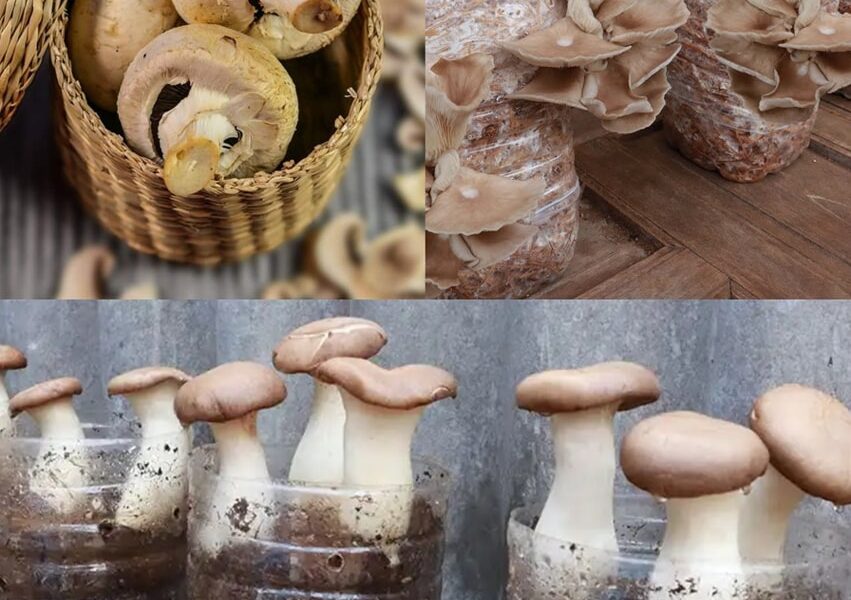Growing mushrooms at home is very simple thanks to recycled plastic bottles
Mushrooms are a versatile and delicious addition to various dishes, but they can be quite expensive when purchased in the store. However, you can save money and enjoy the freshest mushrooms by growing them at home. In this article we will explore an innovative and eco-friendly method of growing mushrooms using 5 liter recycled plastic bottles. By following these steps, you can produce your own bountiful mushroom harvest in just 45 days.
Necessary materials and equipment:
- 5 liter recycled plastic bottles
- Hay
- Mushroom embryo (spores or mycelium)
- Plastic casing
- High pressure watering can
- Soil and substrate
Step 1: Prepare the bottles
Start by selecting plastic bottles. Clean and disinfect them thoroughly to ensure a healthy growing environment for your mushrooms. Then, carefully cut off the top of each bottle, leaving the bottom intact. The open end will serve as a container for the mushrooms.
Step 2: Prepare the straw
Straw is an excellent growing medium for many species of fungi. To prepare it, boil the straw to remove any potential contaminants and soften it. Once boiled, let the straw cool and drain the excess water.
Step 3: Creating air holes
Use a drill or heated metal rod to create small holes in all the plastic bottles. These holes serve as vital air exchange points for the mushroom growth process. Adequate air circulation is essential for successful mushroom cultivation.
Step 4: Overlay the bottles
Layer the bottoms of plastic bottles with boiled straw, creating a firm bed for your mushrooms. Make sure the straw is evenly distributed and packed lightly.
Next, introduce the mushroom embryo (spores or mycelium) onto the straw bed. Place more straw on top, allowing a mix of straw and mushroom embryo inside each bottle. This mixture will serve as a growing medium for your mushrooms.
Step 5: Cover with cling film
Place cling film over each bottle to create a semi-sealed environment. This covering will help maintain humidity levels within the bottle and encourage the growth of the mycelium, the root network of mushrooms.
Step 6: Initial watering
Use a high-pressure watering can to moisten the straw and the mushroom embryo. This initial watering ensures that the growing medium is sufficiently hydrated.
Step 7: Observing growth
Over the next 12 days, keep an eye on your bottles. You should start to see some changes as the mycelium network expands inside the straw. Once you see signs of growth, it’s time to carefully remove the cling film.
Step 8: Second watering cycle
After removing the cling film, continue to water the mushroom bottles regularly. This time, water directly into the bottle through the top opening, making sure the growing medium stays moist.
Step 9: Adding Soil and Substrate
About 12-15 days after removing the cling film, introduce a layer of potting soil and substrate onto the top of each bottle. This mixture provides essential nutrients for mushrooms as they enter the fruiting stage.
Step 10: Continue watering and growing
Continue watering the bottles as the mushrooms grow. Within 45 days you should have fully grown mushrooms ready for harvesting. Remember to maintain consistent humidity and humidity levels throughout the process for best results.
